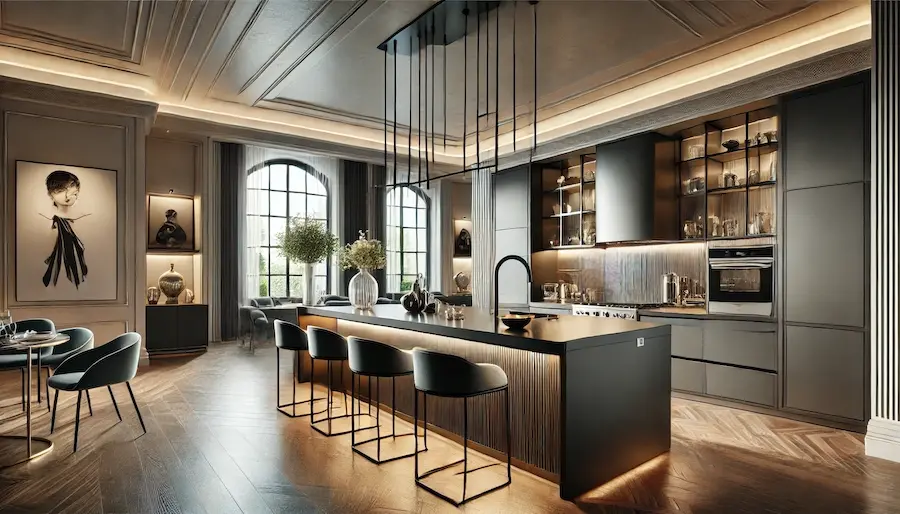Contemporary kitchens epitomize the fusion of modern aesthetics and functionality, reflecting current design trends and technological advancements. This article delves into the history, key features, applications, and considerations pertinent to contemporary kitchen design.
History and Origins of Contemporary Kitchens
The evolution of contemporary kitchens is closely linked to societal shifts and technological progress. In the mid-20th century, the open-plan concept gained popularity, transforming kitchens into central hubs for social interaction. This period also saw the introduction of new materials and appliances that enhanced both functionality and aesthetics. Over time, the emphasis on minimalism and efficiency has led to the sleek, multifunctional kitchen spaces prevalent today.
Key Features of Contemporary Kitchens
- Minimalist Aesthetics: Contemporary kitchens favor uncluttered spaces with streamlined cabinetry and integrated appliances, creating a clean and sophisticated look.
- Innovative Materials: The use of materials such as stainless steel, glass, and engineered stone contributes to a modern and durable kitchen environment.
- Open Layouts: Embracing open floor plans allows for seamless interaction between the kitchen and adjoining living spaces, fostering a sense of inclusivity.
- Technological Integration: Incorporating smart appliances and home automation systems enhances convenience and efficiency in daily kitchen tasks.
- Functional Lighting: A combination of task and ambient lighting is employed to create a versatile and inviting atmosphere.
Applications of Contemporary Kitchens
Contemporary kitchens are designed to accommodate a variety of functions beyond cooking:
- Culinary Activities: Equipped with state-of-the-art appliances and ample workspace, they cater to both everyday meal preparation and gourmet cooking.
- Entertainment: The open design facilitates social gatherings, allowing hosts to engage with guests while preparing meals.
- Family Interaction: As a central hub, the kitchen serves as a space for family members to congregate, dine, and engage in various activities.
- Workspaces: With the rise of remote work, contemporary kitchens often double as informal work areas, providing a comfortable environment for productivity.
Considerations When Choosing a Contemporary Kitchen
When planning a contemporary kitchen, consider the following factors:
- Space and Layout: Assess the available space to determine an efficient layout that promotes ease of movement and accessibility.
- Material Selection: Opt for high-quality, durable materials that align with your aesthetic preferences and maintenance capabilities.
- Appliance Integration: Select appliances that meet your culinary needs and consider built-in options for a cohesive appearance.
- Lighting Design: Incorporate a balanced mix of lighting to enhance functionality and ambiance.
- Budget Planning: Establish a clear budget to guide your choices in materials, appliances, and design services, ensuring a balance between quality and cost.
Conclusion
Contemporary kitchens represent the convergence of style and practicality, adapting to the dynamic needs of modern living. By understanding their evolution, key features, and applications, and by carefully considering design elements, you can create a contemporary kitchen that serves as a functional and elegant centerpiece in your home.
